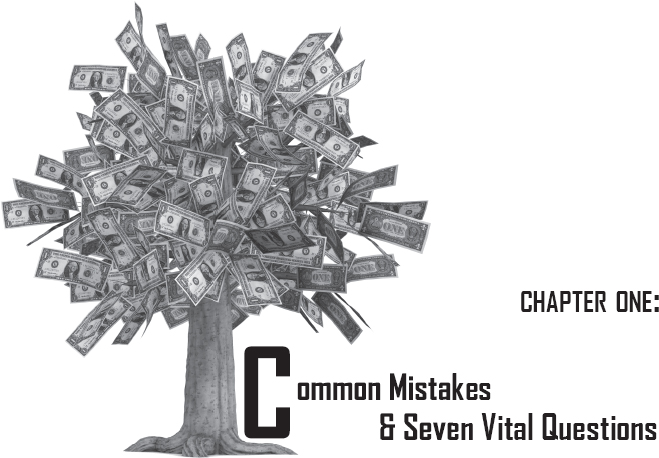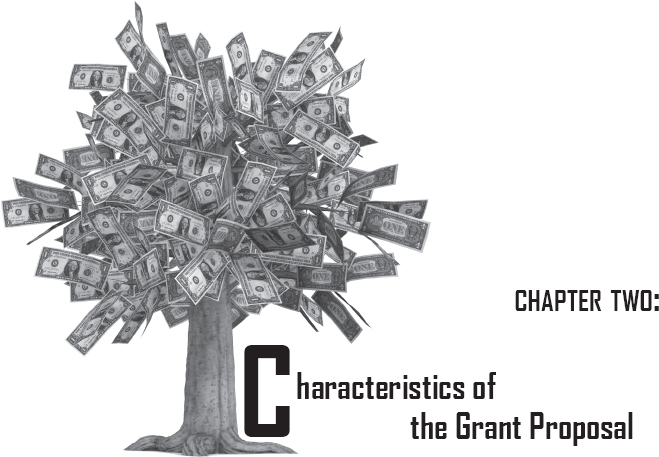



Copyright © 2014 VANESSA S. O’NEAL.
Without limiting the rights under reserved copyright , no part of the this publication may be reproduced, stored in or introduced into a retrieval system, or transmitted, in any form, or by any means (electronic, mechanical, photocopying, recording, or otherwise), without the prior written permission of both the copyright owner and the publisher. For more information, contact Crystal Spirit Publishing Inc. www.crystalspiritinc.com
The scanning, uploading and distribution of this book via the Internet or via any other means without the permission of the publisher is illegal and punishable by law. Please purchase only authorized electronic editions, and do not participate in or encourage electronic piracy of copyright materials. Your support of the authors rights is appreciated.
Although the author and publisher have exhaustively researched all sources to ensure the accuracy and completeness of the information contained in this book, we assume no responsibility for errors, inaccuracies, omissions or any other inconsistency herein. Any slights against people or organizations are unintentional.
The sample grants and component information are actual and have been submitted to various funding agencies. However; the names of the organization to which the information belongs has been replaced to respect the privacy of each individual entity.
O’Neal, Vanessa S.
Grant me the money! : the practical guide to successful grant writing practice / Vanessa S. O’Neal. -- 3rd edition. -- [Durham, North Carolina] : Crystal Spirit Publishing, Inc., [2014]
pages ; cm.
ISBN: 978-0-9904556-1-5
ISBN: 9780990455639
Includes index.
1. Proposal writing for grants--Handbooks, manuals, etc. 2. Grants-in-aid. 3. Research grants. 4. Fund raising. 5. Subsidies. 6. Endowments. 7. Government aid--United States. 8. Economic assistance, Domestic--United States. I. Title.
HG177 .O54 2014 |
2014943324 |
658.15/224--dc23 |
1409 |
Edited by HAZEL ABBUHL |
Cover Design Revision by GLENDA D. WARREN |
Cover Design by KIM MOREHEAD |
Interior Design by ARC MANOR, LLC. |

Crystal Spirit Publishing, Inc.
Printed in the United States of America

DEDICATION
 ACKNOWLEDGEMENTS
ACKNOWLEDGEMENTS
There are those that keep me grounded while at the same time encouraging me to soar. To them I want to say THANK YOU! My perseverance is in knowing that I have you to encourage me. I am humbled by your encouraging words and ever present love and kindness.
|
|
|
|
|
|
|
|
|
|
 PREFACE
PREFACE
In 2001 Grant Me the Money! The first edition was released. In 2007 the second edition was released. Now in 2014, thirteen years after the first edition, the 3rd edition is now released and available. There has been so many changes in our world and our communities within the last thirteen years. However; one thing remains and I don’t foresee it changing any time soon, and that is the communities need for services and the organizations who provide services need for funding.
This edition includes “actual” grants that were developed by nonprofits, submitted and either funded or denied to be used as examples for your learning and comprehension. There are also actual budgets, a step-by-step demonstration of the eight components that should be included in every grant proposal, updated comprehensive resource information and an exhaustive Q&A section included in this edition.
And for those that loved the largeness of the font in the first two editions, Grant Me the Money! 3rd edition does not disappoint, the font is still large and easily readable.
Lastly, as comprehensive as this book is and with as much resource information and details that is included the guarantee of becoming a master grant writer that is awarded millions of dollars is not guaranteed however; you will acquire the foundation that you need to identify and apply for funding to continue the work and service to your community.
Enjoy the book!
 CONTENTS
CONTENTS
INTRODUCTION |
||
CHAPTER ONE: |
COMMON MISTAKES & SEVEN VITAL QUESTIONS Reasons Grants are Denied: Common Mistakes Seven Vital Questions (Interrogative Pronouns) |
|
CHAPTER TWO: |
CHARACTERISTICS OF THE THE GRANT PROPOSAL Characteristics of the Grant Proposal Grant Proposal Development: Eight Components | |
I. |
Program Summary |
|
II. |
Problem Statement |
|
III. |
Needs Assessment |
|
IV. |
Goals |
|
V. |
Objectives |
|
VI. |
Program Approach |
|
VII. |
Evaluation |
|
VIII. |
Budget |
|
IX. |
Cover Letter |
|
CHAPTER THREE: |
SOLICITED AND FEDERAL GRANT APPLICATIONS Four Main Types of Grant Funding Solicited and Federal Grant Applications |
|
CHAPTER FOUR: |
FEDERAL GRANT APPLICATION Federal Grant Application |
|
CHAPTER FIVE: |
THE REVIEW PROCESS The Review Process Compassion Capital Fund Grant Proposal |
|
CHAPTER SIX: |
STATE GRANT PROPOSALS State Grant Proposals Foundation and Corporation |
|
CHAPTER SEVEN: |
SAMPLE GRANTS Sample Grant # 1 Sample Grant # 2 Sample Grant # 3 Sample Grant # 4 Sample Grant # 5 Sample Grant # 6 Sample Grant # 7 |
|
CHAPTER EIGHT: |
RESOURCE INFORMATION Resource Information Informative Websites Intergovernmental Review (SPOC List) National Council of Nonprofits State Association [NCNA] Members Publications and Organizational Resources Federal Agency Addresses Federal Agencies that Provide Grants |
|
CHAPTER NINE: |
FREQUENTLY ASKED QUESTIONS |
|
CHAPTER TEN: |
DEFINITIONS |
|
INDEX |
||
 INTRODUCTION
INTRODUCTION
Grant proposal submission starts long before the first letter is ever typed or the first question on an application is answered. The process begins with the germination of an idea for a project or program, and then comes the search for funding.
Before embarking on the process of writing a grant proposal, the process and terminology must be understood. Since the inception of “Not-for-Profit” or “Nonprofit” service organizations, funding has been an issue and most organizations have had to rely on funding from external sources. When corporations and foundations entered the picture as funding sources, grant award became the term of choice for money or property contributed to the nonprofit organization. Funding requests were provided with the submission of a letter or formal application, but as the “Charitable Giving Process” increased and gained in popularity, the process became more complicated. The limitations of keeping a letter readable made it difficult to provide all the necessary information and the justification for denial of funding more plausible.
This, in turn, has created a demand for books of this nature. Grant writing requires skill. It is not one style of writing alone, but a combination of technical form, research writing, and creative writing. True, there is a story to be told, but the story is based on facts, and the information is developed in a systematic and strategic manner rendering the reader to understand that there is a need of some sort.
It is important to note that the term grant is not always appropriately used when referring to the proposal. The grant itself is the awarded money or property. By contrast, the proposal is that which is submitted to obtain the grant award. It is amazing how many times the proposal is actually referred to as the grant. Typically, statements such as “I have to write a grant” or “A grant was written” are commonplace in conversations regarding funding; this is incorrect. This is why it is beneficial to fully understand the process and the terminology before writing the proposal.
A grant can be anything from the contribution of materials and supplies to money. Monetary grants are the most popular and the most sought after.
This book is a step-by-step guide to assist grant writers from the novice to the experienced in the development of a proposal. Each section has an exercise that will assist the reader in understanding the section and will provide a hands-on approach to the learning experience.

 REASONS GRANTS ARE DENIED: COMMON MISTAKES
REASONS GRANTS ARE DENIED: COMMON MISTAKES
 PROJECT DESCRIPTION AND PROGRAM PLANS
PROJECT DESCRIPTION AND PROGRAM PLANS
For the most part, when it comes to the project description and the program plan the most common mistake is using incomplete statements. Both these areas must be as detailed as possible.
 UNREALISTIC STAFFING PLANS
UNREALISTIC STAFFING PLANS
Staffing plans must fit the stated program or project. If the staffing plan is not specifically tailored to the program, the program will be understaffed and under budgeted OR over staffed and not feasible for funding consideration.
 THE COMMITMENTS
THE COMMITMENTS
All grant proposals should indicate commitments to be made by outside agencies, businesses, etc. A generic form can record the commitments of each entity, or each entity can provide a detailed letter of commitment printed on their letterhead.
 GRANT LANGUAGE AND VERBIAGE
GRANT LANGUAGE AND VERBIAGE
Language and verbiage is very important when writing grant proposals. A rule of thumb is to maintain a level of political correctness when choosing words. Utilize sources such as CNN, C-SPAN, MSNBC, and whitehouse.gov to obtain the “buzz words” that are used at the federal level, also, keep up with current events.
 THE BUDGET
THE BUDGET
The budget tells the funding source what is needed and how much it will cost to operate or function. Most mistakes within the budget come from lack of research.
 LACK OF COLLABORATION
LACK OF COLLABORATION
The phrase is self-explanatory, however, think of it this way, funding sources do not want to feel as if they are the only ones that are buying into the project. Good collaboration shows interest.
To ensure that the information funders seek is included in the proposal, you need to answer seven vital questions. The answers to these seven questions will form the foundational structure for the proposal and assist in the process of communicating your thoughts and plans. In addition, using interrogative pronouns (who, what, when, where, why, and how) within each of the eight components (discussed in another chapter) will serve as a guide to ensuring that your vision is specifically detailed.
 SEVEN VITAL QUESTIONS (Interrogative Pronouns)
SEVEN VITAL QUESTIONS (Interrogative Pronouns)

 CHARACTERISTICS OF THE GRANT PROPOSAL
CHARACTERISTICS OF THE GRANT PROPOSAL
There are two types of grant proposals, solicited and unsolicited, and each type has distinct characteristics.
Solicited grant proposals are those that are in response to a funding source issuing a Request For Proposal (RFP) or Request For Application (RFA). Typically, there is an application form, a due date, and a specific stated maximum amount for funding request. There may also be other directives or stipulations: geographical location, nonprofit status, and the number of copies of the proposal to submit.
Unsolicited grant proposals typically are more general. Most do not have a formal application and due dates, and the amount of funding that can be awarded varies but is not specific. There are multitudes of foundations and corporations that use this system and accept unsolicited grant proposals. This proposal is the hardest to develop because it literally begins with a blank sheet of paper. There is nothing to prompt you for a response. Creativity is key.
There are advantages and disadvantages to this type of proposal. One advantage is that one standard copy can be created and submitted to several funding sources at the same time. The disadvantage is that because the funding source has not specifically provided a funding range or maximum funding request guidelines, the amount awarded may not be the amount requested. This is not revealed until the award letter is received.
Another advantage is that the funding source can decide to fund either specific programs or specific budget items described within the proposal. The disadvantage, though, is this can result in renegotiation if two or more funding sources decide to fund the same budget item.
Funding sources that accept unsolicited proposals normally will send a congratulatory letter, the check, and instructions for reporting at the end of the grant.
 GRANT PROPOSAL DEVELOPMENT: EIGHT COMPONENTS
GRANT PROPOSAL DEVELOPMENT: EIGHT COMPONENTS
There are eight standard components of a grant proposal:
1) The Program Summary; 2) Problem Statement; 3) Needs Assessment; 4) Goals and Objectives; 5) Program Approach; 6) Evaluation; 7) Budget, and 8) Cover Letter.
I. Program Summary
Summary, as defined by Webster’s New World College Dictionary, means: “that which presents the substance or general idea in brief form also, concise and condensed” in other words, a short, clearly stated description.
The key to this component is writing a description that focuses on key elements of interest as they relate to the organization, community and *program in the order in which they are stated in the grant proposal. The description should not focus on details at all nor exceed one and a half pages in length.
The summary page should provide the reader with an idea of what to expect. The interest of the reader will either be piqued or deadened. This is the one page that will determine whether or not the reader turns to the second page, requests additional information, or trashes the proposal altogether.
EXERCISE # 1: SUMMARY
There are two examples of a summary page in this section. Read each one thoroughly, take notes and then decide which is the good and which is the bad example. Be sure to include in your notes the reasons for your decision.
 Example # 1
Example # 1
The purpose of the Families 4 Life, Inc. Fayetteville, North Carolina, is to provide the community which entails the City of Fayetteville and Cumberland County with services in which are either lacking, inadequate, or nonexistent. The organization focuses upon developing and promoting volunteerism and service in various areas of need to include youth, senior citizens, homeless, the educationally challenged, and the economically challenged.
 Example # 2
Example # 2
Families 4 Life, Inc. is a 501 (c) 3 tax-exempt, nonprofit organization located in North Carolina.
The focus of the organization is upon youth, seniors, and community development to include the economically and educationally challenged. The various services that are provided and scheduled to be provided place an emphasis upon educational achievement and academic growth, fiscal responsibility and leadership.
The goal of the organization is to implement programs that will incorporate “collaboration, consensus and a no fault approach to decision making” The programs that we implement will foster an atmosphere of inclusion of parental involvement, will use experiential exercises as a means of learning, will attack educational issues such as the school drop out rate and suspension problems and will provide programs that enhance the employability of High School graduates.
If you chose example #2 as the best-developed summary statement then you are correct. This example is very detailed but provides the information needed in a clear and concise manner.
Example #1 is very vague. There are sixty-three words, but all of them combined do not make a statement. It lacks description, organization and content. This is a common issue among grant writers. Just because it sounds good does not mean that it is thorough and comprehensive. Sometimes less is more—just not in this case.
II. Problem Statement
The problem statement focuses on the issue(s) that the proposed program aims to address. It is a constructive complaint statement that should not exceed two complete pages.
The statement should also paint a picture of the target demographic population. For example, if the issue is unemployment not only should the current employment percentage rate be included, but also the past year’s rate. In addition it is good practice to include the activities that led to the unemployment rate (i.e., warehouse plant closings, increased rates of layoffs due to outsourcing, etc.).
Including supporting documentation, such as charts and graphs, will provide the reader with a visual and easier-to-digest concept of the need. Be creative.
The information should be factual with quoted statements, statistics, or printed materials from other works properly referenced and acknowledged.
Statistical data should be current—that is within 5 years, except for census information, which is released every ten years.
Obtaining statistical information can be tedious and time consuming, but very necessary. The key to research is knowing where to start and what resources to use. The Internet is a good starting point; however, information found there is not always accurate. Resources, such as almanacs, newspaper articles, magazines, journals, and books can be found in local libraries and can be invaluable to your application.
EXERCISE # 2: PROBLEM STATEMENT
Directions: Read the example of the problem statement and answer the question:
According to the Board of Education the rate of retention and/or dropouts is increasing due to the lack of reading, writing, mathematics, and computer skills. The lack of basic skills is continuously keeping the masses from graduating on time as well as keeping students from attending colleges and universities on academic scholarships. After school programs allow for a more intense academic setting in which the students will receive more personal attention to assist them in their academic successes.
According to the Department of Justice the crime rate involving youth in Chatham County is at it’s greatest between the hours of 3:00 and 6:00 p.m. This is during the time when most students are home alone due to the parents having to be gainfully employed and the latchkey population of children is steadily increasing. The alarming factor is that the children committing the crimes are as young as 12 years old.
Question: What is the issue?
Let us examine the statements line by line:
“According to the Board of Education the rate of retention and/or dropouts is increasing due to the lack of reading, writing, mathematics, and computer skills.”
 This of course means that the dropout rate is increasing because the students do not have the skill level to succeed.
This of course means that the dropout rate is increasing because the students do not have the skill level to succeed.
“The lack of basic skills is continuously keeping the masses from graduating on time as well as keeping students from attending colleges and universities on academic scholarships.”
 The lack of skills is keeping the students from staying on grade level and they fall behind.
The lack of skills is keeping the students from staying on grade level and they fall behind.
“After school programs allow for a more intense academic setting in which the students will receive more personal attention to assist them in their academic successes”.
 Additional educational support is needed in order to provide the assistance that students need to be on grade level.
Additional educational support is needed in order to provide the assistance that students need to be on grade level.
“According to the Department of Justice the crime rate involving youth in Chatham County is at it’s greatest between the hours of 3:00 and 6:00 p.m. This is during the time when most students are home alone due to the parents having to be gainfully employed and the latchkey population of children is steadily increasing.”
 Crime increases during the times that children are unsupervised which is between the time that they are released from school and their parent(s) arrive home.
Crime increases during the times that children are unsupervised which is between the time that they are released from school and their parent(s) arrive home.
“The alarming factor is that the children committing the crimes are as young as 12 years old.”
 The children are as young as middle school grade level
The children are as young as middle school grade level
*** Ask yourself the question one more time. What is the problem? If you said:
 The dropout rate is increasing because the students do not have the skill level to succeed or to maintain an interest.
The dropout rate is increasing because the students do not have the skill level to succeed or to maintain an interest.
 The lack of skills is keeping the students from staying on grade level and they fall behind;
The lack of skills is keeping the students from staying on grade level and they fall behind;
 Additional educational support is needed in order to provide the assistance that students need to be on grade level;
Additional educational support is needed in order to provide the assistance that students need to be on grade level;
 Crime increases during the times that children are unsupervised which is between the time that they are released from school and their parent(s) arriving home;
Crime increases during the times that children are unsupervised which is between the time that they are released from school and their parent(s) arriving home;
 The children are as young as middle school grade level;
The children are as young as middle school grade level;
then you are absolutely correct. These are the problems! Regardless of how elaborately stated they are, the problems that have been identified are basic and simple.
Keep this in mind when you are developing the problem statement. Start with definitive statements regarding the problem and build from there.
III. Needs Assessment
According to Webster’s New World Dictionary, 4th Edition: needs is defined as: Of necessity.
Assessment means: To estimate or determine the significance, importance or value of.
Simply stated, a needs assessment is the estimation of importance of programs and projects in a community.
The needs assessment should be completed long before the search for a grant begins. Ask yourself these questions: How did you know that the program you are suggesting was needed in your community? How did you determine the type of program? What information did you use to assist you in your conclusion? The answer: you conducted a needs assessment—however conscious or subconscious this is the process that you have completed to get to this point. The process is scientific on some level, but the bottom line is that a problem must be identified with a solution.The needs assessment details the reasons for the program and supports the problem statement. Problem Statement (Issue), Needs Assessment (Solution).
The needs statement does not have to be separate from the problem statement. The two may be combined, but must include the answers to the seven vital questions.
Statistics are not as critical in the needs assessment unless they demonstrate how the program will address the problem. If there are other programs that address the same issues that are relevantly similar to the one being proposed, then including statistics would be helpful.
 Example: Needs Assessment
Example: Needs Assessment
According to the National Center for Education Statistics individuals who do